In the digital marketplace, the design of your e-commerce store is much more than just a pretty facade; it's a critical component of success.
A well-designed online store does not only captivate visitors but also facilitates a seamless shopping experience, guiding them from initial interest to the final purchase with ease and efficiency.
In this article we delve into the essential design elements that are the backbone of a successful e-commerce website.
Here are four pivotal design elements to elevate your online storefront:
- Streamlined Navigation: Clear paths for effortless product discovery.
- Adaptive Layouts: Flexible designs for a consistent experience across devices.
- Engaging Product Displays: Captivating visuals and descriptions that sell.
- Effortless Checkout Flow: A checkout process that's quick and uncomplicated, encouraging completion of purchases.
Essential Componets of Ecommerce Stores
Here is the list of the features you should incorporate into your e-commerce website design, to get loyal clients and make the most of your business.
1. Customer names
Do you know the most pleasant word we marketers like to use? You might think of ‘success', or ‘trust', or ‘conversions', or ‘respect', or something else. Well, the reality is it’s your name.
Psychologists say people love being addressed by their names. It has a strong correlation with the friendly nature of a person.
Marketers and sales managers understand this very well. Haven’t you ever been approached by a sales manager? The first thing he'd ask would be your name and it's likely that it'll be used multiple times in the conversation.
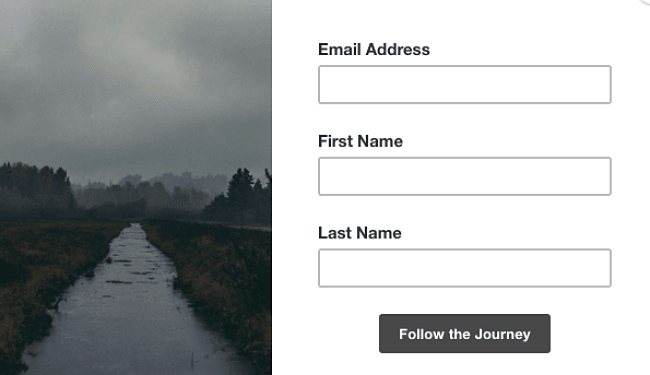
If you allow personal account registration or support quick signup, make sure you ask a customer to enter the name. Here are the 3 reasons why you should certainly make one:
- It’s quick. Compared with uploading pictures or entering other personal details it takes less time.
- It’s worry-free. For most people, this isn't considered as sensitive information and they don't mind sharing it.
- It’s efficient. You can use the name to personalize your clients’ dashboards and make them feel like home.
This is something many e-commerce sites fail to do.
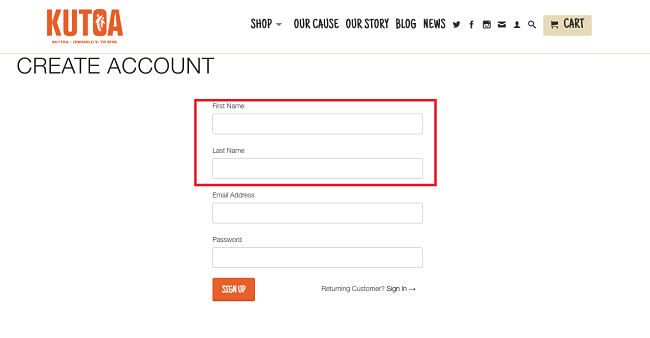
The main rule here is not to be obtrusive. Use customer names to greet them when they sign in after they make purchases or in email newsletters. Don’t put it in every second line on your website. We all dislike pushy shop assistants.
2. Popular products
It all starts with the shop window, doesn't it?
Before we enter a shop, we study what it has to offer. The same thing works for e-commerce websites. Don’t hesitate to add the best products to your main page.
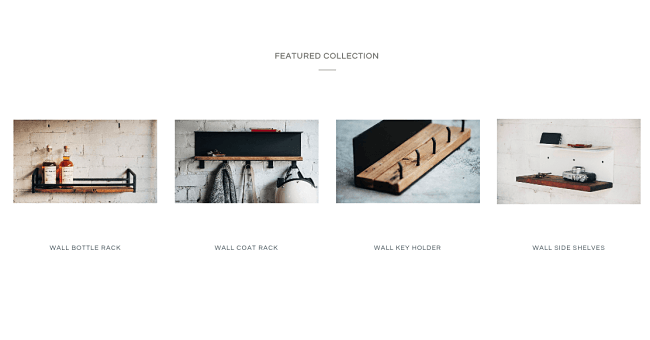
You may call them popular, featured or bestsellers. They always attract a lot of attention and provide good conversions. These lists are often the most viewed on the e-commerce websites.
Many customers are too busy or sometimes even lazy to spend a lot of time searching for something. Put the best products on your homepage to help them make the right choice before they get frustrated and exit your store.
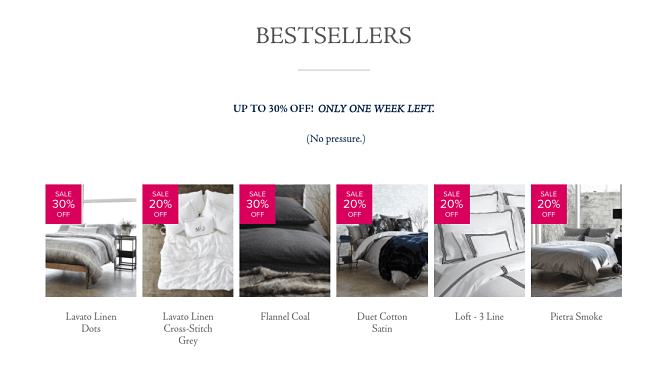
To get the best results out of your favorites, monitor and update the lists regularly. A good idea is to share seasonal or monthly bestsellers.
3. Product collections
Product collections are the lists dedicated to a certain topic. They may be seasonal: winter or summer top products; festive: Christmas or New Year gifts, new arrivals, products with discounts or anything else that relates to your niche.
The best news is that they rank very well. This means you can climb much higher in the search results. Don't forget to update and replace your collections from time to time. Customers are looking for something new every time they land on your site.
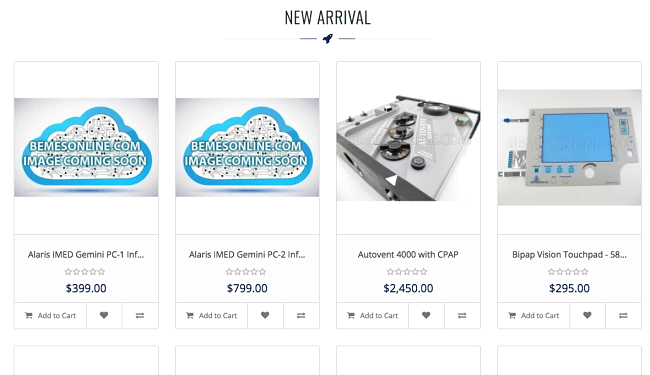
A good way to make your collections more personal is to create a list of recommended items. Add the items based on what the last customer searches. People tend to buy similar products based on their taste and need.
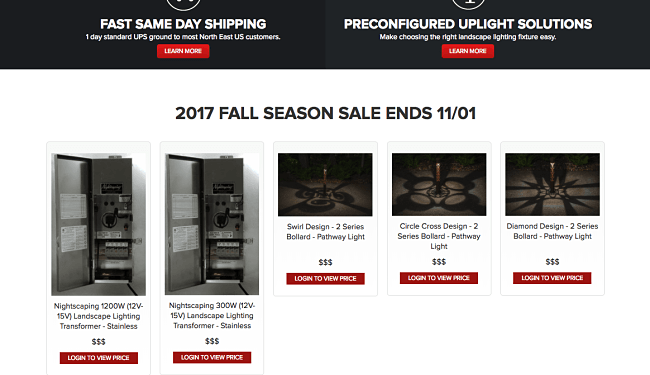
4. Zoom option
If you have product pictures on your website (and it’s highly recommended to add them), make sure you've added a zoom option. Imagine you go to a shop to buy shoes. You’ll probably want to take a closer look at them. It’s all the same on the Internet.
People don't want to buy a pig in a poke. Regardless of what they buy- be it clothes, gadgets or cars, they want to see the details.
Simply allow your clients to zoom in and zoom out pictures. Just make sure that the pictures have a good quality and do not get blurred.
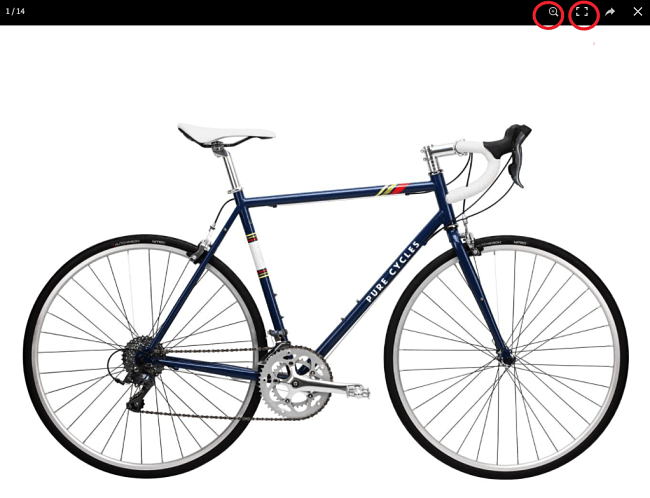
Since it isn't possible for customers to touch and hold products, you should provide a customer with as much visual information as possible.
5. Shipping and delivery details
If you offer shipping or delivery, make sure you added detailed information to your website. Place a link to this page at the top of the website.
Want a better idea? Here you go.
Add it to the main navigation menu or pin to the page header. This is very important, especially if you have different terms based on the location or on the order.
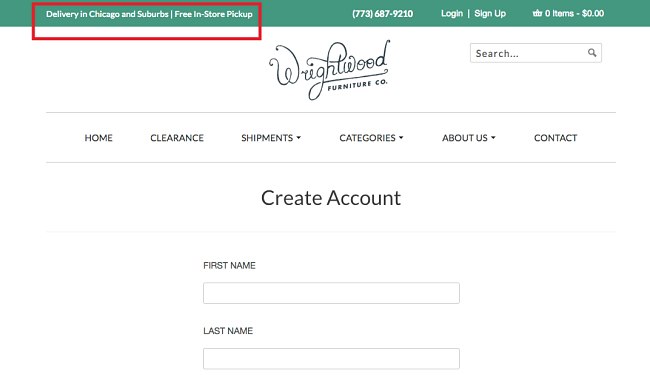
Customers get frustrated when they find out that they can't get a product they picked just because there's no delivery to their location. If you offer free delivery, don't hesitate to mention it on the main page.

This is a good point to start your online advertising and an extremely attractive option that can bring you more customers.
6. Contact details and feedback forms
You probably want to build long-term relationships with your clients. To achieve this, you should make them trust you. Start with providing your contact information. Customers should know that they can reach out if they need to. Place this information somewhere where it can be easily accessed.
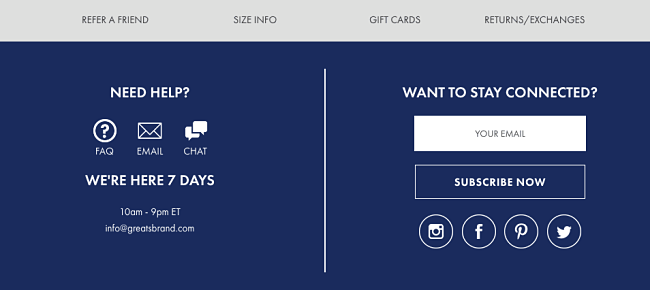
If you can afford an online chat, it’s perfect. Nothing makes a customer happier than a quick response. But if you can’t add it yet, don’t worry. You can start with a simple feedback form.
However, make sure that the submitted messages are not ignored and the estimated reply time is one working day or less.
7. Ratings and reviews
A successful e-commerce website is a kind of collaboration between the website owners, managers and the customers. It’s not just a shopping platform but, a community. Customers buy products, share their opinion with other people and give recommendations. We all know that the word of mouth often works better than any advertising.
Why not let it spread on your website?
Some website owners avoid adding the rating and comment features. They fear that customers will write negative reviews. Of course, a disappointed customer is much more motivated to write an angry review, than a satisfied customer. It’s time-consuming and you must have a good reason to spend your time writing a review.
If you don’t think you’re ready to add the comment and review features, start with the rating option. This is a win-win feature:
- You can use the submitted rating to create handy filters;
- Customers can quickly pick the most rated (the best) products;
- It doesn’t take a lot of time to rate the product, so it demands less motivation.
But if you decide to go with the comments features, there are some ways to push the satisfied customers to writing reviews:
- You can ask them directly in the follow-up email after the purchase;
- You can offer some perks to the most active users (e.g. discounts or bonuses)
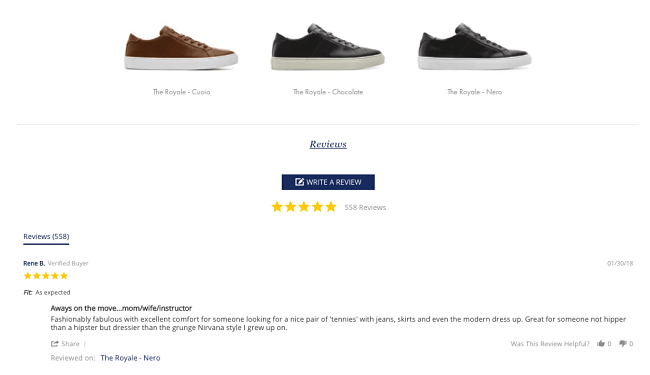
All in all, a feedback from clients as important as a chance to get a feedback from you.
8. Price filters
Filters are an important part of any e-commerce website. But price filters are the most used and the most significant. Therefore, they need more attention.
Make sure your customers are able to sort and filter product by price in all product categories. If the price excludes the cost of delivery, don’t forget to include the information.
If there are free or paid delivery based on the product, add a checkbox to hide or show products with the paid delivery.
Product pricing details must be transparent, without any hidden information.
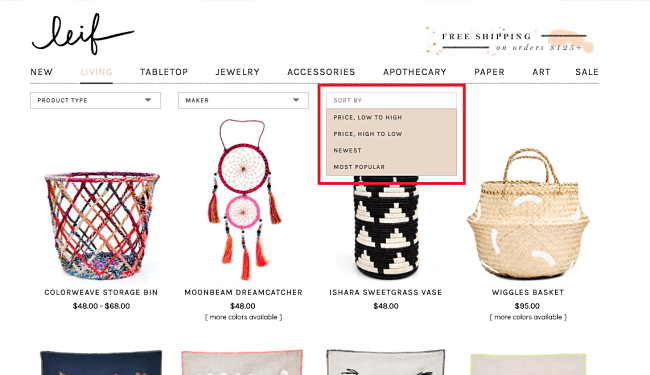
Remember the more comfortable your users feel at your website, the more likely they are to find what they are looking for, buy it and then return or even bring some friends with them.
9. Wishlists
A wish list is an option designed for the customers who currently don’t have enough money to purchase a product or need more time to make a decision.
Give them the opportunity to put a product aside and then get back to it when they are ready to buy.
People may forget what they wanted to purchase or simply find the same product on another website and buy it there. But if they have it on the wish list on your website, there is a greater chance they may buy it from you.
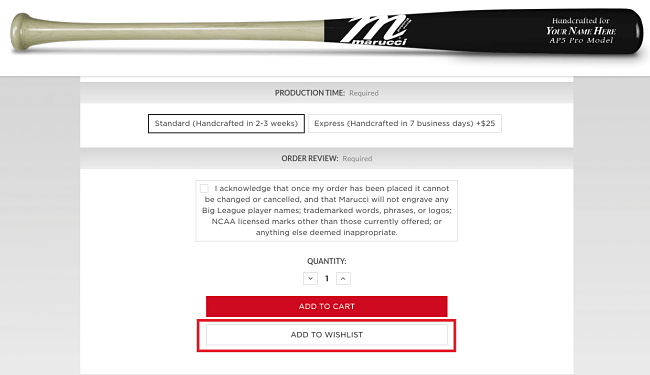
You may later use gentle reminders to notify clients about price changes and push them to buy a product.
Tr to design a wish-list as eye-candy as possible. The better it looks, the more likely a customer is to move products to a cart.
10. Sharing options
Sharing is a powerful feature absent from many e-commerce website designs.
Allow your customers to share products with the nice and handy short links. You may integrate an online URL shortener with your website, many of them provide API. This feature may seem unnecessary to you, but don’t underestimate it.
Sharing products with one button that creates a short and eye-candy links is more attractive than copying bulky URLs. It’s especially important for smartphone and tablet users.
Some website owners prefer another way. They add the ‘Share on social media' buttons. This option has some advantages. Instead of copying a link to a clipboard, this feature allows sharing products instantly, without pasting links anywhere.
Unfortunately, most customers prefer sharing products directly in personal messages, chats or via email.
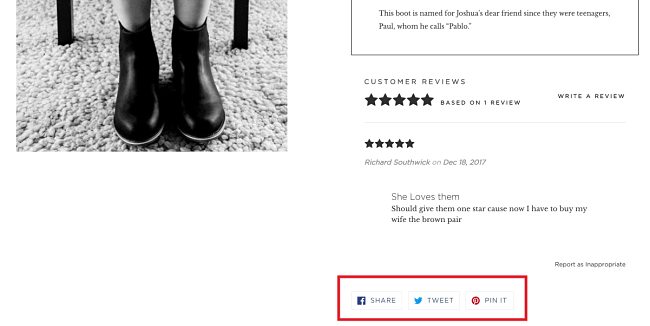
You may decide to add both the above options. Just make sure your interface doesn’t look like a spaceship dashboard with hundreds of buttons.
Summary
All eсommerce websites are different. There is no ultimate interface solution. You should always think what your business needs in the first place.
But there are some must-have features you could use to get better results. Don’t forget to make them fit in your design.
The basic ecommerce UX rules are simple:
- The design of your e-commerce website should be simple. All customers should feel comfortable. The navigation should be clear. All information should be easily accessible.
- You should provide detailed information about your products. Pictures, descriptions, zoom options. The more information customers get, the more likely they are to buy a product.
- Design a personal account page. Save last orders, allow to create wish-lists and save items in the cart for later. Clients like to have everything at hand.
- Add feedback and review forms. Give your clients a chance to reach out, ask questions and share feedback. This way you’ll make them feel more important.
- Add detailed information on delivery options. Don’t forget about website rules and terms of service. Describe methods of payment, shipping procedure, and returns policy. Protect yourself from arguments and claims.
- Make your website live and flourish. Add collections and lists, design a page with special offers and bonuses. Update your website regularly. Your customers will want to get back if they know something happens here.
- And finally, never forget, that you deal with real people on the other side of the screen. Make them feel special.
Keep in mind these rules when you plan to add a new feature.
Think for a while.
Maybe, your website lacks a personal touch or, maybe, you forgot to add a feedback form. Many UX features are tiny and don’t require much time to design and add. But, your customers would be satisfied.
And the last recommendation. Ask your clients what they need. Sometimes, they may offer brilliant ideas that never crossed your mind.




I like the idea of using customer names in your website design and things like emailing – but just be sure you have everything coded correctly. It’s always a little embarrassing when you get caught referring to your customers as “{customer_name}” 🙂